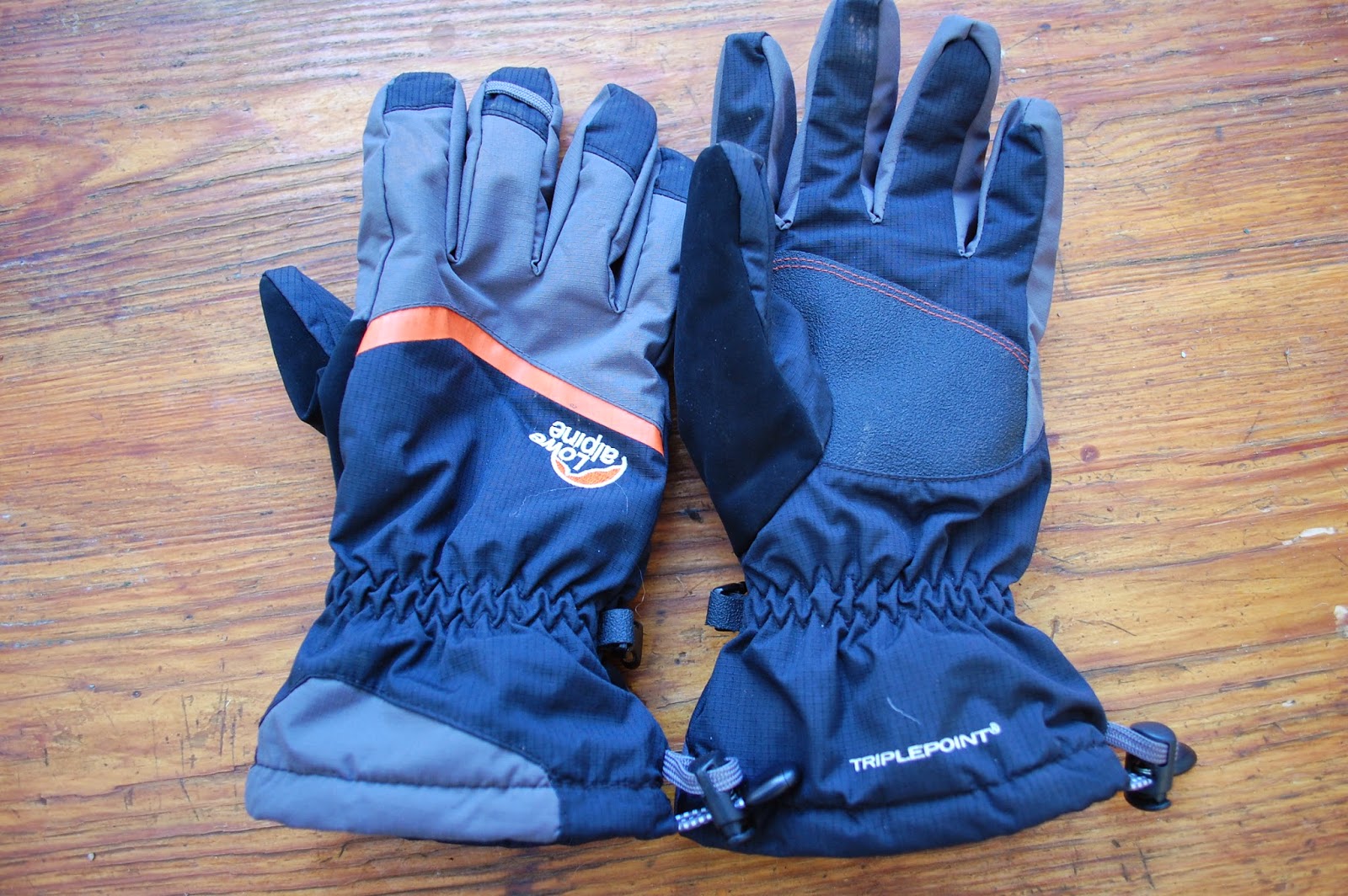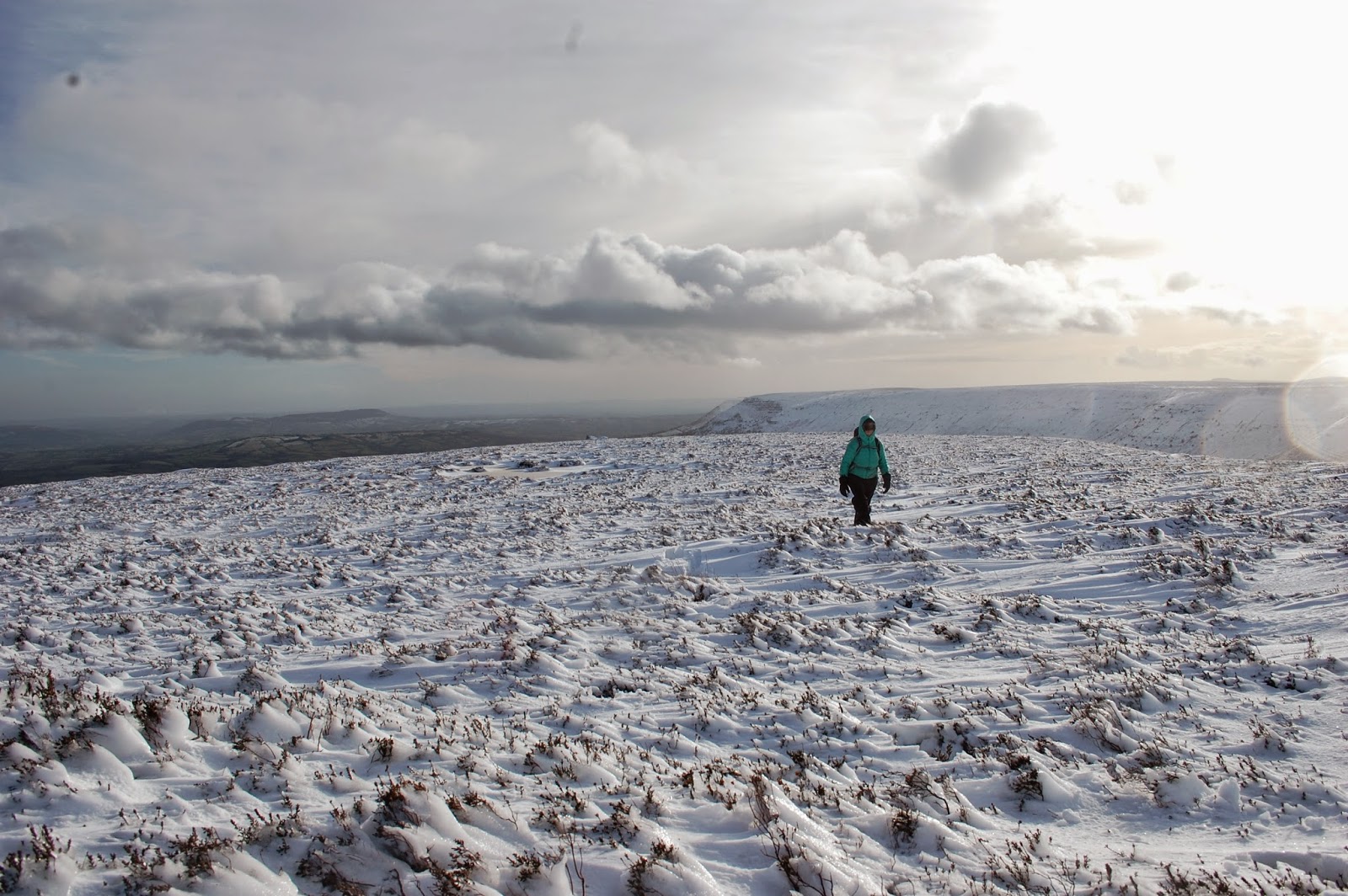I'm preparing for a winter skills course in March, and most of the advice I've received up until now has been to bring lots of pairs of gloves. I could have done with a decent pair
the last time I was in Scotland. With that in mind I've been on the lookout for some decent winter gloves to add to my collection of either cheap and poor quality or old and worn out gloves.
A recent day walk provided the perfect opportunity to try out two pairs bought in the last couple of months.
Sealskinz Extreme Cold Weather Gloves
I have to confess that I'm a big fan of
Sealskinz kit, so when I saw a past-season model of these gloves for £12 on the Sealskinz outlet website it was just too good an offer to refuse (so good in fact that I got 2 pairs, one for Laura as well).
A couple of minutes fiddling with the map in a cold and windy car park meant my hands were already numb when I put the gloves on. That usually means cold hands all day with gloves only serving to insulate rather than re-warm my chilly fingers, but after five minutes my hands were noticeably warmer. By the time we were half way up the ridge they were almost too warm as the Primaloft insulation seemed to live up to its billing as 'The World's Best Down Alternative', and while my face was battered by a stingingly cold westerly, my hands stayed comfortable all of the time.
The fit was tighter on my fingers than I'm used to, but not uncomfortably so, and despite the thickness of the gloves I was able to use my hands for some tasks. When I overheated I was able to handle my down jacket zip, although the smaller zip on my merino baselayer proved too fiddly, forcing me to remove the gloves for this. Wrist leashes made this a quick and easy process though, with no danger of losing a glove in high winds. As soon as my hands were back in the gloves again they began to rewarm once more.
It didn't rain, so I couldn't test the manufacturers promises of waterproofing, but my experience of other Sealskinz products has been good in this area. If anything these gloves seem more robust than some of their other products giving me confidence that they'll keep the rain and snow out for some time.
Lowe Alpine Storm Gloves
I picked these up on sale a couple of months ago, again a past-season model. I'd worn them out and about a few times already but this was the first time they'd been used in temperatures hovering around zero coupled with strong winds.
My immediate impression on changing into these was that they were not as warm as the Sealskinz. That may be a slightly unfair comparison as they're not designed for the same conditions, but it was the case nonetheless. The fit was looser than the Sealskinz making them feel less restricting, but this may have contributed to some of the heat loss. Even in the cold temperatures these gloves performed pretty well, just not as well as the Sealskinz, and my hands were comfortable enough.
The Storm Gloves allowed more dexterity than the Sealskinz as, despite their slightly bulky appearance I was able to manage zips and buckles easily.
Nearing the bottom of the ridge I decided that I would have to test the waterproofing claims of Lowe Alpine. Not having endured any rain though there was only one option...
My hands stayed warm and dry throughout the expert construction work that went into this, suggesting that they are pretty waterproof. Sorry I can't be any more scientific than that, but I think the snowman test is a pretty reliable one!
Overall impressions
Both gloves have a comfortable soft lining and performed well in the cold and wind. The Sealskinz gloves were by far the warmest, but with an rrp of around £65 that's only to be expected; I was lucky to get mine at a real knockdown price. I'll be taking both pairs to Scotland with me and would be confident that either will do the job, but the Sealskinz will be my go-to pair for the coldest of days.










